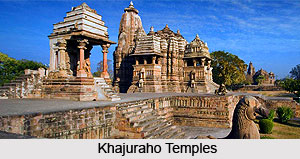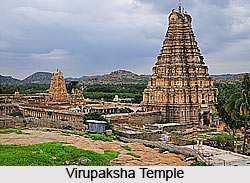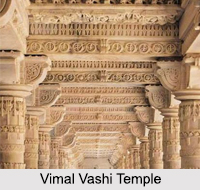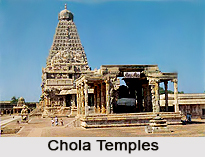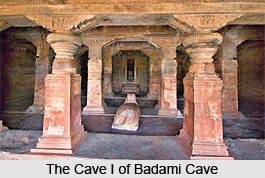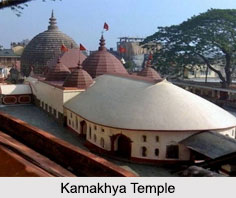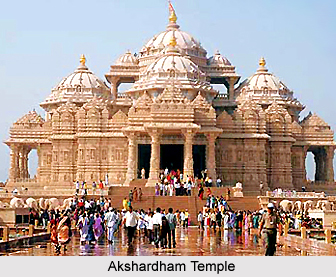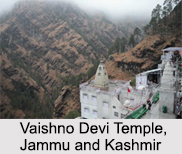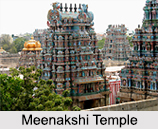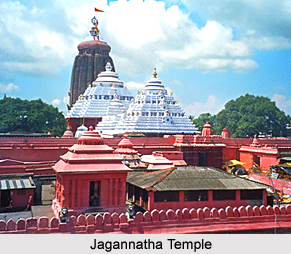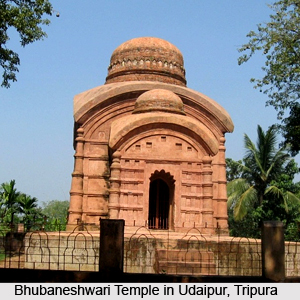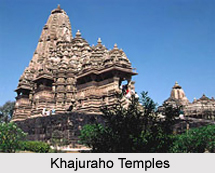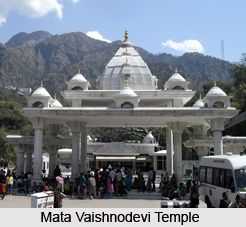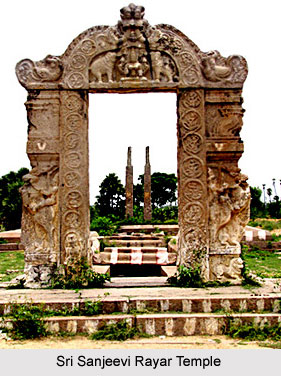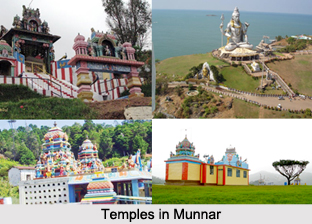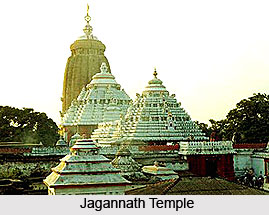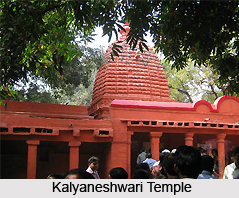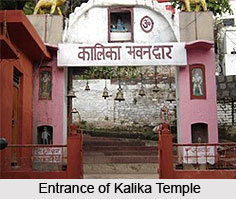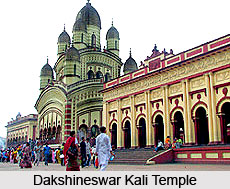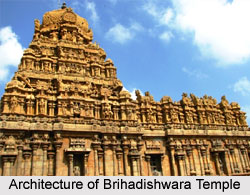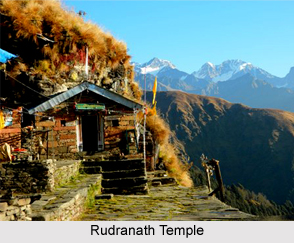 Rudranath Temple, located in the Garhwal Himalayan ranges in the state of Uttarakhand is a marvellous, legendary shrine which is dedicated to Lord Shiva and is surrounded by alpines and rhododendron shrubs. It is a natural rock temple which has been modified from a mountain cave to a temple. It stands at an altitude measuring 3,600 metres above mean sea level and is one of the five other sacred Shiva temples belonging to Panch Kedar, namely Kalpeshwar, Madhyamaheshwar, Tungnath and Kedarnath. It is said that prior to visiting Rudranath Temple, devotees must pay a visit to these five important Shiva temples to complete their pilgrimage. Lord Shiva`s `mukha` or face is worshipped at this holy spot, in the form of `Nilkanth Mahadeva`. The term `Rudranath` implies to `Him who is Angry`. The temple possesses a stone idol of Lord Rudranath.
Rudranath Temple, located in the Garhwal Himalayan ranges in the state of Uttarakhand is a marvellous, legendary shrine which is dedicated to Lord Shiva and is surrounded by alpines and rhododendron shrubs. It is a natural rock temple which has been modified from a mountain cave to a temple. It stands at an altitude measuring 3,600 metres above mean sea level and is one of the five other sacred Shiva temples belonging to Panch Kedar, namely Kalpeshwar, Madhyamaheshwar, Tungnath and Kedarnath. It is said that prior to visiting Rudranath Temple, devotees must pay a visit to these five important Shiva temples to complete their pilgrimage. Lord Shiva`s `mukha` or face is worshipped at this holy spot, in the form of `Nilkanth Mahadeva`. The term `Rudranath` implies to `Him who is Angry`. The temple possesses a stone idol of Lord Rudranath.
Mythology of Rudranath Temple
As per a mythological legend, devotees believe that Rudranath Temple has been constructed by the Pandavas, who were the main protagonists of the Hindu epic Mahabharata. This story asserts that the Pandavas had arrived in the Himalaya Mountains to seek Lord Shiva, to cleanse themselves of the sins which had been committed by them in the fierce battle of Kurukshetra. However, Lord Shiva refused to meet them and retreated in a bull avatar, escaping underground. He then re-emerged in the areas of Panch Kedar, and his hump appeared at Kedarnath, arms protruding in Tungnath, the stomach and navel appearing Madhyamaheshwar, His face becoming visible at Rudranath and finally His head and hair emerging in Kalpeshwar.
A Lord Shiva idol is worshipped at Kedarnath during winter and the `Doli Yatra` commences via Sagar, from Gopeshwar, wherein the Doli Yatris approach Pitradhar after crossing Panar and Lyuti Bugyal. Ancestors are worshipped here. The Doli eventually approaches Rudranath after passing through Dhalabni Maidan, where Vandevi is worshipped.
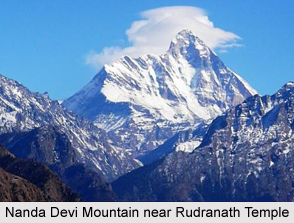 Regional inhabitants of this region are of the opinion that the deity Vandevi offers them protection, by safeguarding the `Kshetra`. During Shravan month, an annual fair is organised on the full moon day, which occurs in the period from July to August. Generally, it is celebrated on the day of Raksha Bandhan. The priests performing religious rites at this temple are Tiwaris and Bhatts of Gopeshwar. Historic swords emerging out of the rocks near the trekking pathway to Rudranath, via Gopeshwar are highly revered and worshipped by devotees as they are believed to belong to the Pandavas. It is at Nandikund, which is present at a height of 2, 439 metres above sea level.
Regional inhabitants of this region are of the opinion that the deity Vandevi offers them protection, by safeguarding the `Kshetra`. During Shravan month, an annual fair is organised on the full moon day, which occurs in the period from July to August. Generally, it is celebrated on the day of Raksha Bandhan. The priests performing religious rites at this temple are Tiwaris and Bhatts of Gopeshwar. Historic swords emerging out of the rocks near the trekking pathway to Rudranath, via Gopeshwar are highly revered and worshipped by devotees as they are believed to belong to the Pandavas. It is at Nandikund, which is present at a height of 2, 439 metres above sea level.
Geography of Rudranath Temple
Several water tanks or kunds are present close to Rudranath Temple which includes Mana-Kund, Chandra-kund, Surya -kund and more. The mountains of Nanda Ghunti, Trishul and Nanda Devi serve as picturesque backdrop of this ancient temple and Rudraganga or Vaitarani River flows near Rudranath Temple. This river is sacred since it is believed that souls of departed people must cross this holy river to attain salvation or mukti, which is the reason why it is also called the river of salvation. It is essential that devotees perform the funeral rites of their dead relatives, by offering `pind` at Rudranath as it is said that offering pind to ancestors here is equal to making a large offering at Gaya.
Visiting Information
Rudranath temple is often referred as the toughest Panch Kedar temple in terms of accessibility. The closest airport to Rudranath Temple is Jolly Grant in Dehradun situated about 258 kilometres from Rudranath and the nearest railway station is Rishikesh which is located at a distance of nearly 241 kilometres from the temple. Travellers can also start trekking from Gopeshwar or other areas nearby or access Rudranath via a motorable road which is existent till Sagar, about 5 km away from Gopeshwar. Trekking options are also available through Naila and Panar settlements, which represent a 17 kilometres trek from the area of Gangolgaon and 3 kilometres from Gopeshwar. Visitors can also avail yet another trek route via Mandal, from Gopeshwar to Rudranath Temple. One can also try trekking from Joshimath through Helang, and this route measures about 45 kilometres. Rudranath can also be accessed via Palla, Kalgont, Kimana and Dumak, from Kalpeshwar.
